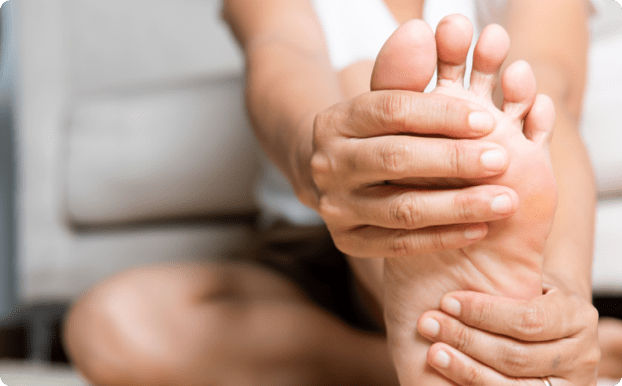Symptoms of Gout
Gout symptoms, as with other types of arthritis, are most often experienced in cycles that we refer to as “attacks” or “flares.” These flares may last anywhere from a few days to several weeks, depending on the individual. Trigger foods can cause flares even a few hours after consumption. They may also happen overnight or after an injury.
Commonly, one joint is affected by a gout flare, but it can still affect multiple joints at a time. It is not unheard of for a flare to begin in one joint and move to another over time.





